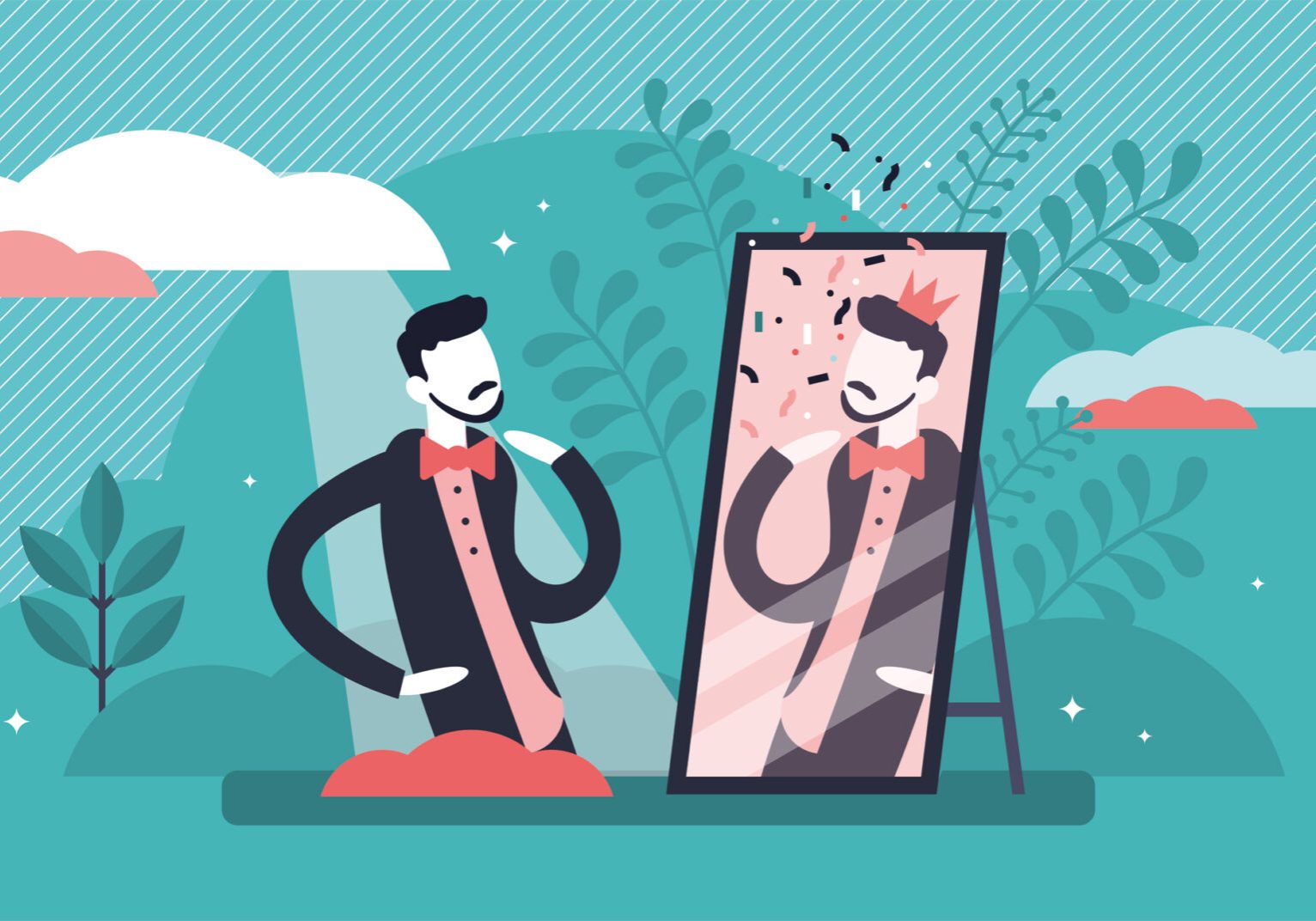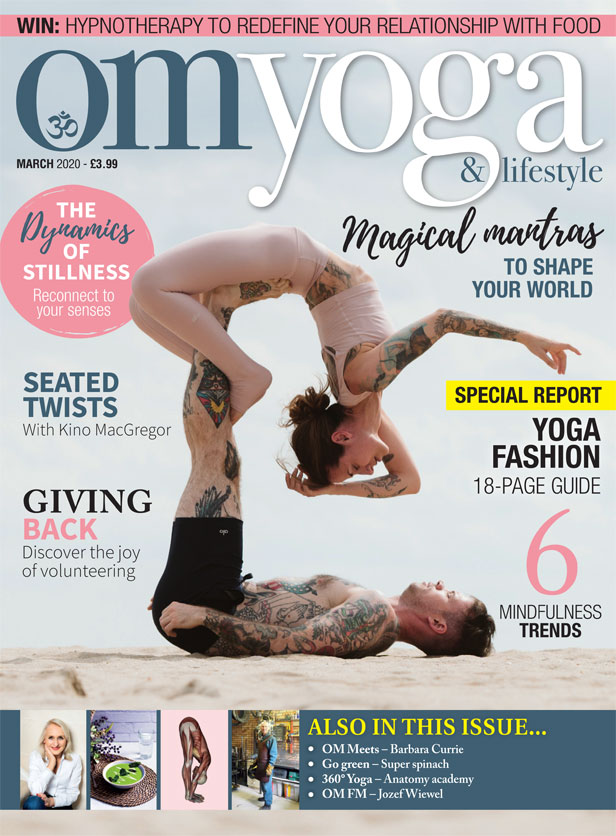
What is ego?
Vidya Heisel explores the realms of the ego and ponders the eternal question: who am I?
In Western psychology the ego is seen as central to one’s identity and personality. The ego is the psychological component of the personality that is represented by our conscious decision-making process. It is thought to be a self-organising principle and it is considered necessary to have ‘a healthy ego’ to function well in the world. According to Jung, the ego represents the conscious mind as it comprises the thoughts, memories, and emotions a person is aware of. The ego is largely responsible for feelings of identity and continuity.
This is quite different to the concept of ego or Ahamkara, as described in yogic philosophy. The ego in yogic philosophy is never healthy, simply because it is a mistaken identity. In the sutras, Patanjali says that we wrongly identify with a separate sense of self that is essentially not real. It is a misunderstanding and projection.
What do we mean when we say the word ‘I’? Usually, what we are referring to is a combination of ‘my body’, which my teacher unceremoniously calls ‘a meat tube’ (I know that is a challenging concept to sign on to) and ‘my mind’ which is essentially made up of an accumulation of ideas, concepts, memories, projections, fears, desires and conditioning. We feel very limited when we identify solely with the body-mind complex. This sense of limitation can lead to feeling contracted, fearful and often to suffering from low self-esteem. We are conditioned to think this way. When we believe that all we are is this body-mind complex, life can seem meaningless. Identifying strongly with the sense of a separate self can lead to a whole host of ego-centred negative behaviours such as narcissism, selfishness, defensiveness, pride, arrogance, victimisation, a strong desire to be ‘right’, a desire to be ‘in control’ and fear of death. It is true that our physical body is definitely limited, as are all of the ideas we have about ourself. The cure for all of this is to understand who we really are.
So who am I? The million dollar question. However, looking deeply into oneself, for the answer to this burning existential question, as we are often encouraged to do in the spiritual world,
will likely not lead one to an ultimately satisfactory answer. It might help to start with peeling away the layers of who I am not.
I am not the sum total of all the things that happened to me, I am not my memories, I am not the ideas that I have about myself and so forth. In India, it is believed that the scriptures contain a definitive and elegant answer to this question. The Chandogya Upanishad in the Sama Veda unequivacably says, a number of times, the phrase ‘tat tvam asi’ which means ‘thou art that’. Consciousness/awareness/existence itself, is the ‘that’ that is being indicated here. This is the classic pronouncement of non-dualism and the highest understanding about our true nature.
I love this quote by Vedanta teacher James Swartz: “If you want to know who you are, subtract your story. What is left over is you, one simple awareness-conscious being.”
Coming down to earth, we have the whole of the Prakriti (the manifest world) realm in which we have no choice but to act. Prakriti or Maya being the apparent reality of the creation, and our human lives. In the well-loved ancient scripture, The Bhagavad Gita, in reference to this realm, Krishna says: “Air, water, earth, fire, sky, mind, intelligence and Ahamkara (ego) together constitute the nature created by me.” Meaning that who we are is made up of the five elements (like everything in the created world, the microcosm of our physical body reflects the macrocosm of the created universe), plus our thoughts and emotions (mind), our ability to discriminate and contemplate (intelligence) and the ego. Our ability to discriminate is our way out, our saving grace and our path to understanding. However, we seldom use it wisely to discriminate our true unchanging nature (thou art that) from the false idea of who we think ourselves to be (the limited ego).
This might seem dualistic but in classic Vedanta, (which is a non-dualistic teaching) which hails from the Upanishads and the Gita and a few other classic texts, it is explained by the fact that the ground of being, or the unchanging timeless essence of everything is always present and untainted in any way by the constantly changing world.
It can be helpful to contemplate the fact that our story is always changing, just as the physical body is always changing and our ideas are always changing. Realising that the only thing that has never ever changed is that unchanging sense of aliveness…of ‘I-amness’; of awareness looking out and witnessing everything that is unfolding in the mind and in the world around us. That sense has always been there as far back as we can remember. That is who the scriptures tell us that we are. It isn’t an exotic far-out idea, if we think about it; we already know it to be true. Even when we no longer believe we are the body-mind complex but know ourselves as awareness or consciousness itself, we will continue to maintain our personality, in order to continue to navigate seamlessly through this human birth, but we will no longer identify strongly with it. It will seem like a comfortable costume that we put on to play the game of being in this human form.
In conclusion, we don’t need to rid ourselves of the ego, as we often hear in spiritual circles, we just need to understand who we are and who we are not, and then the identification with the mind-body complex and the separate sense of self will gradually dissolve and the ego will cease to be a problem. We will no longer identify with it or any of the dis-ease it causes. We will know ourselves to be whole, complete and unlimited awareness.
Vidya Heisel is the founder of Frog Lotus Intenational Yoga Teacher Training (froglotusyogainternational.com) and director of Suryalila Retreat Centre (suryalila.com)




